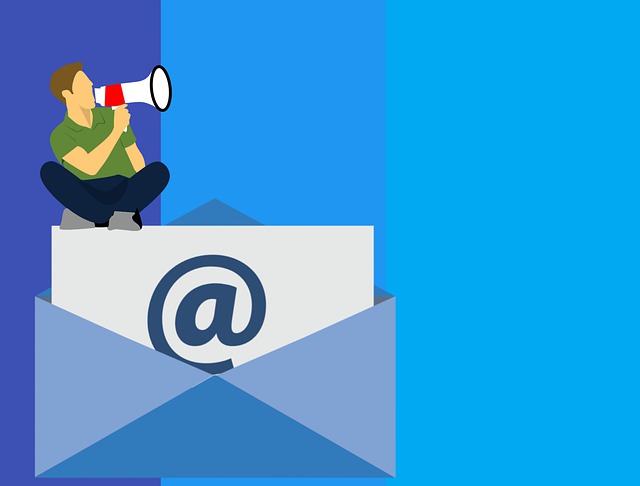Are your email marketing campaigns for your food business falling flat? Are your messages being tossed aside like yesterday’s leftovers? Don’t let your efforts go to waste. It’s time to spice things up and avoid the common email marketing mistakes that are plaguing the food industry.
In this article, we’ll serve you up with five sizzling hot tips to ensure your emails are devoured by hungry customers.
Firstly, let’s talk subject lines – the appetizer of your email. Craft them with care, like a master chef perfecting their signature dish. Avoid serving up irrelevant or generic lines that leave your audience feeling unsatisfied. Instead, tantalize their taste buds with personalized and engaging subject lines that make them crave more.
Next, don’t serve everyone the same dish. Segment your email list like a gourmet menu, catering to different tastes and preferences. By delivering targeted content, you’ll satisfy each subscriber’s unique cravings and keep them coming back for more.
But beware, too much of a good thing can spoil the appetite. Overwhelming your subscribers with a flurry of emails is a surefire way to end up in the spam folder. Pace yourself, like a well-timed three-course meal, and deliver emails that leave them hungry for the next course.
And speaking of personalization, don’t forget to sprinkle your emails with a dash of individuality. Just like a personalized note from a chef, a touch of personalization can make your subscribers feel special and valued.
Lastly, don’t let your campaign fall flat on its face when it comes to mobile optimization. In today’s fast-paced world, people are constantly on the go, accessing their emails on their smartphones. Make sure your emails are mobile-friendly, like a food truck that can satisfy cravings on the move.
So, let’s embark on this culinary journey together and avoid these email marketing mistakes that are as unappetizing as a burnt soufflé. With these tips in your recipe book, your email campaigns will become the main course that customers can’t resist.
Key Takeaways
- Segment your email list to cater to different tastes and preferences
- Avoid overwhelming subscribers with too many emails
- Craft personalized and engaging subject lines
- Ensure mobile optimization for emails
Crafting Irrelevant or Generic Subject Lines
Don’t make the mistake of crafting irrelevant or generic subject lines – they won’t catch your subscribers’ attention! In the competitive world of email marketing, you need to stand out from the crowd.
Creative subject lines are key to capturing your audience’s interest and increasing open rates. So, instead of settling for a plain subject line like ‘Check out our latest menu,’ try something catchy and intriguing like ‘Indulge in our mouthwatering dishes: your taste buds will thank you!’
To ensure the effectiveness of your subject lines, consider A/B testing different options to see which ones resonate with your audience the most.
By putting in the effort to create attention-grabbing subject lines, you’ll entice your subscribers to open your emails and discover the exciting content you have to offer.
Now, let’s move on to the next section about neglecting to segment your email list.
Neglecting to Segment Your Email List
Forgetting to group your customers based on their preferences can result in missed opportunities to connect with them on a more personal level.
Email segmentation benefits your food industry business in numerous ways. By dividing your email list into different segments based on factors such as demographics, purchase history, or engagement level, you can effectively target your audience with relevant content. Not only does this increase the chances of your emails being opened and clicked on, but it also enhances customer loyalty and satisfaction.
By sending tailored offers and recommendations to specific segments, you show your customers that you understand their needs and preferences. This level of personalization can significantly improve engagement and ultimately drive more sales. Don’t miss out on the chance to connect with your customers on a deeper level! Instead, implement effective targeting strategies through email segmentation. This will ensure that your messages resonate with your subscribers, leading to higher conversions and stronger relationships.
Now, let’s move on to the next section about overwhelming subscribers with too many emails.
Overwhelming Subscribers with Too Many Emails
Are you bombarding your subscribers with an avalanche of never-ending emails, suffocating their inbox and driving them to the brink of madness? It’s time to rethink your email frequency management and implement effective customer engagement strategies.
Here are four reasons why overwhelming your subscribers with too many emails is a big no-no:
-
Fatigue: Bombarding your subscribers with numerous emails can lead to email fatigue, causing them to lose interest and unsubscribe from your list.
-
Decreased Open Rates: When subscribers see an influx of emails from you, they may start ignoring or deleting them without even opening, resulting in lower open rates.
-
Unsubscribes: Overwhelming subscribers with too many emails can lead to an increase in unsubscribes, as they may perceive your brand as spammy or annoying.
-
Missed Opportunities: By bombarding subscribers, you risk overshadowing important emails and promotions, causing them to get lost in the clutter.
By avoiding this mistake and finding the right balance in email frequency, you can enhance customer engagement and increase the effectiveness of your email campaigns. Now let’s dive into the next section about failing to personalize your emails.
Failing to Personalize Your Emails
Failing to personalize your emails can result in a lack of connection with your subscribers, leading to disengagement and a decrease in open rates. Personalization is a key strategy in email marketing for the food industry, as it allows you to tailor your messages to individual subscribers’ preferences and interests. By addressing your subscribers by their names and using data to understand their buying habits, you can create targeted and relevant content that resonates with them. Incorporating a 2 column and 3 row table in your emails can also grab their attention, showcasing personalized recommendations, exclusive offers, and upcoming events. This not only enhances customer engagement but also increases the likelihood of conversions. Ignoring mobile optimization is another common mistake that can hinder your email marketing efforts.
Ignoring Mobile Optimization
Make sure you prioritize mobile optimization for your emails, as 70% of consumers prefer to read emails on their smartphones, and failing to do so could result in missed opportunities for engagement and conversions.
With the rise of mobile design trends, it’s crucial to adapt your email marketing strategies accordingly. Responsive email templates are essential for ensuring that your emails are displayed correctly on different screen sizes, making it easier for recipients to read and interact with your content.
Neglecting mobile optimization not only frustrates your audience but also hinders your ability to capture their attention and drive action. As you move forward in your email marketing efforts, remember to consider the importance of mobile optimization and its impact on your overall success.
Now, let’s dive into the next section about neglecting to test and analyze your campaigns.
Neglecting to Test and Analyze Your Campaigns
Don’t forget to test and analyze your campaigns to ensure you’re maximizing their effectiveness and driving the best results possible. It’s not enough to simply hit send and hope for the best.
Take advantage of email tracking software to gain insights into how your audience is engaging with your emails. This valuable data will help you fine-tune your campaigns and optimize future ones.
A/B testing for subject lines is another powerful tool that can significantly impact open rates. Test different variations to see which ones resonate best with your subscribers.
Additionally, analyzing click-through rates and conversion rates will help you understand what content is most effective in driving action. By consistently testing and analyzing your campaigns, you’ll be able to make data-driven decisions and continuously improve your email marketing strategy.
Frequently Asked Questions
How can I ensure that my subject lines are relevant and engaging to my audience in the food industry?
To ensure that your subject lines are relevant and engaging to your audience in the food industry, focus on creating creative subject lines and delivering targeted content.
According to a recent study, 64% of people are more likely to open an email if the subject line is personalized and grabs their attention. Craft subject lines that are catchy, intriguing, and highlight the value or benefit your email provides.
By doing this, you can increase open rates and drive more engagement with your audience.
What are some effective ways to segment my email list in the food industry?
To effectively segment your email list in the food industry, utilize targeting strategies based on customer preferences.
Start by gathering data on your customers’ dietary preferences, cooking habits, and food interests. Use this information to create targeted email campaigns that cater specifically to each segment.
For example, send personalized recipes to customers who enjoy cooking or offer exclusive discounts on vegan products to those with dietary restrictions.
By tailoring your emails to individual preferences, you can increase engagement and drive higher conversions.
How often should I be sending emails to my subscribers without overwhelming them?
Email frequency plays a crucial role in maintaining an engagement balance with your subscribers. It’s essential to find the sweet spot that keeps them interested without overwhelming their inboxes.
By strategically planning your email campaigns, you can create anticipation and excitement. Consider sending a weekly or bi-weekly newsletter with valuable content, exclusive offers, and updates. This approach will keep your subscribers engaged while giving them enough breathing room to appreciate your brand.
Remember, consistency is key, but so is respecting their time and attention.
What are the key elements of personalization that should be included in food industry email marketing?
Are you wondering how to make your food industry email marketing more effective? Personalization is key.
By using customer data and preferences, you can create personalized emails that resonate with your audience. Start by crafting compelling subject lines that grab attention.
Then, use segmentation strategies to send targeted emails based on customer interests and behaviors. Remember to find the optimal email frequency to avoid overwhelming subscribers.
Lastly, ensure your emails are mobile optimized for maximum engagement.
Why is mobile optimization important for email marketing in the food industry?
Mobile optimization is crucial for email marketing in the food industry. With the majority of people accessing emails on their smartphones, it’s essential that your emails are responsive and visually appealing on mobile devices.
By implementing mobile optimization tips such as using responsive design, your emails will adapt to different screen sizes, ensuring a seamless user experience. This not only enhances engagement but also increases the chances of recipients opening and interacting with your emails, ultimately driving more conversions.
Conclusion
As you wrap up your email marketing campaign in the food industry, remember to tread carefully. Just like a chef adding the final garnish to a dish, your conclusion should leave a lasting impression.
Avoid the email marketing mistakes that could leave your audience with a bitter taste. Craft subject lines that tantalize their taste buds, segment your list like separating ingredients, and don’t overwhelm them with too many emails.
Personalize your messages to make them feel like a custom-made meal and optimize for mobile to make them easily digestible.
Finally, test and analyze your campaigns like a seasoned food critic, refining your strategy with each bite.









